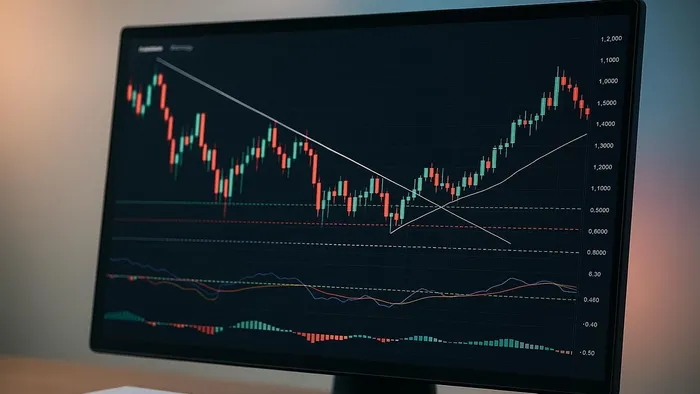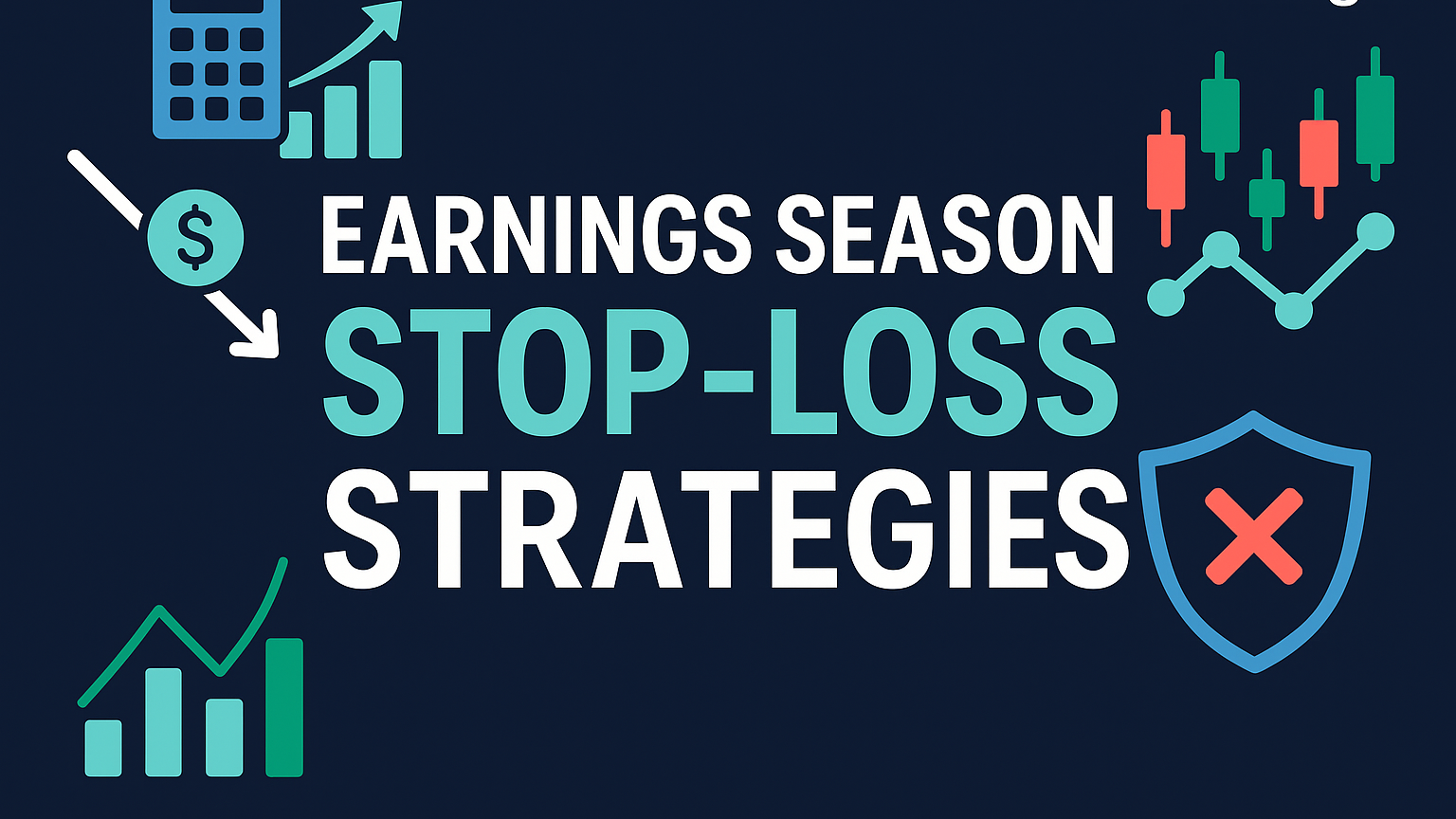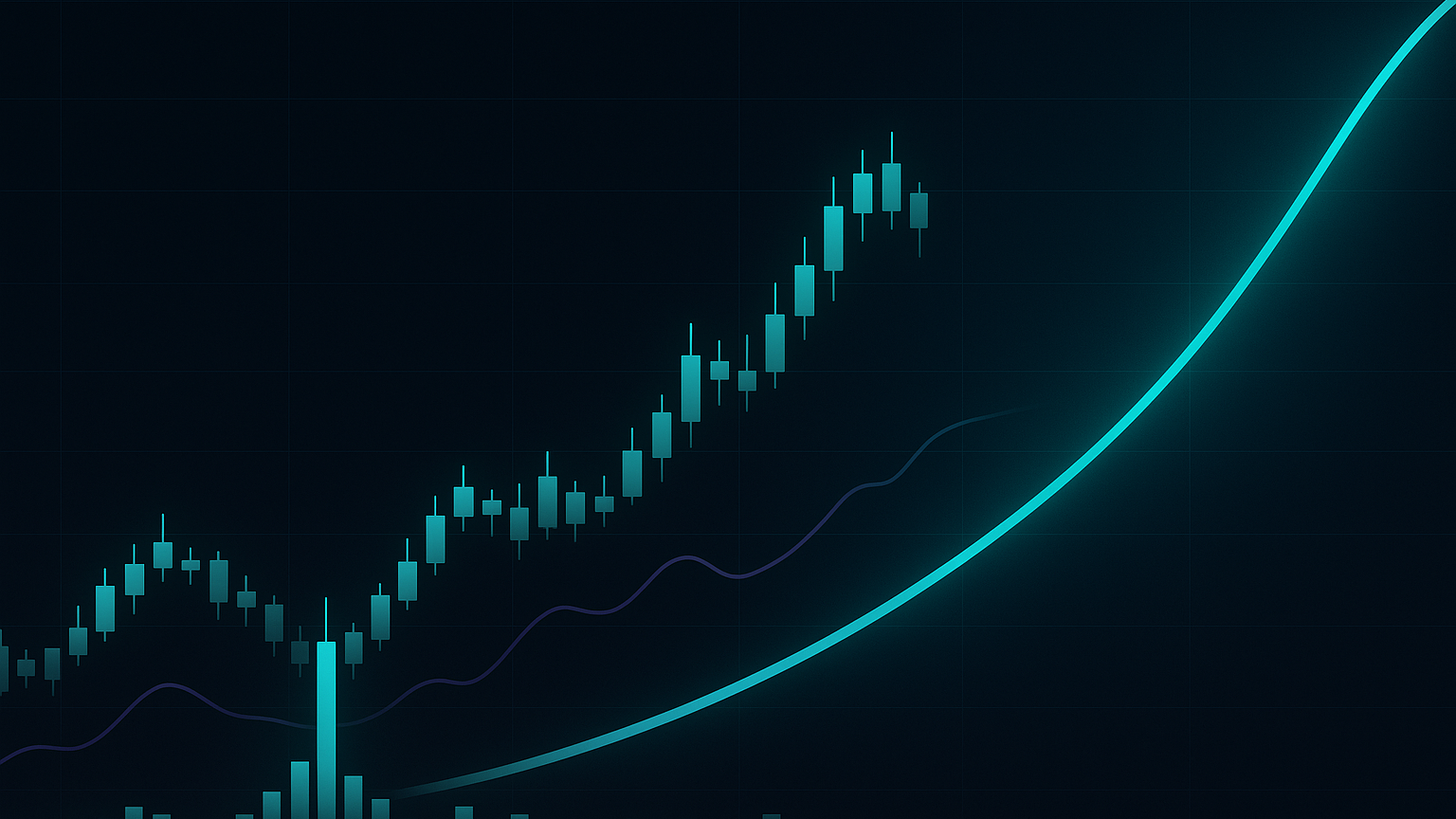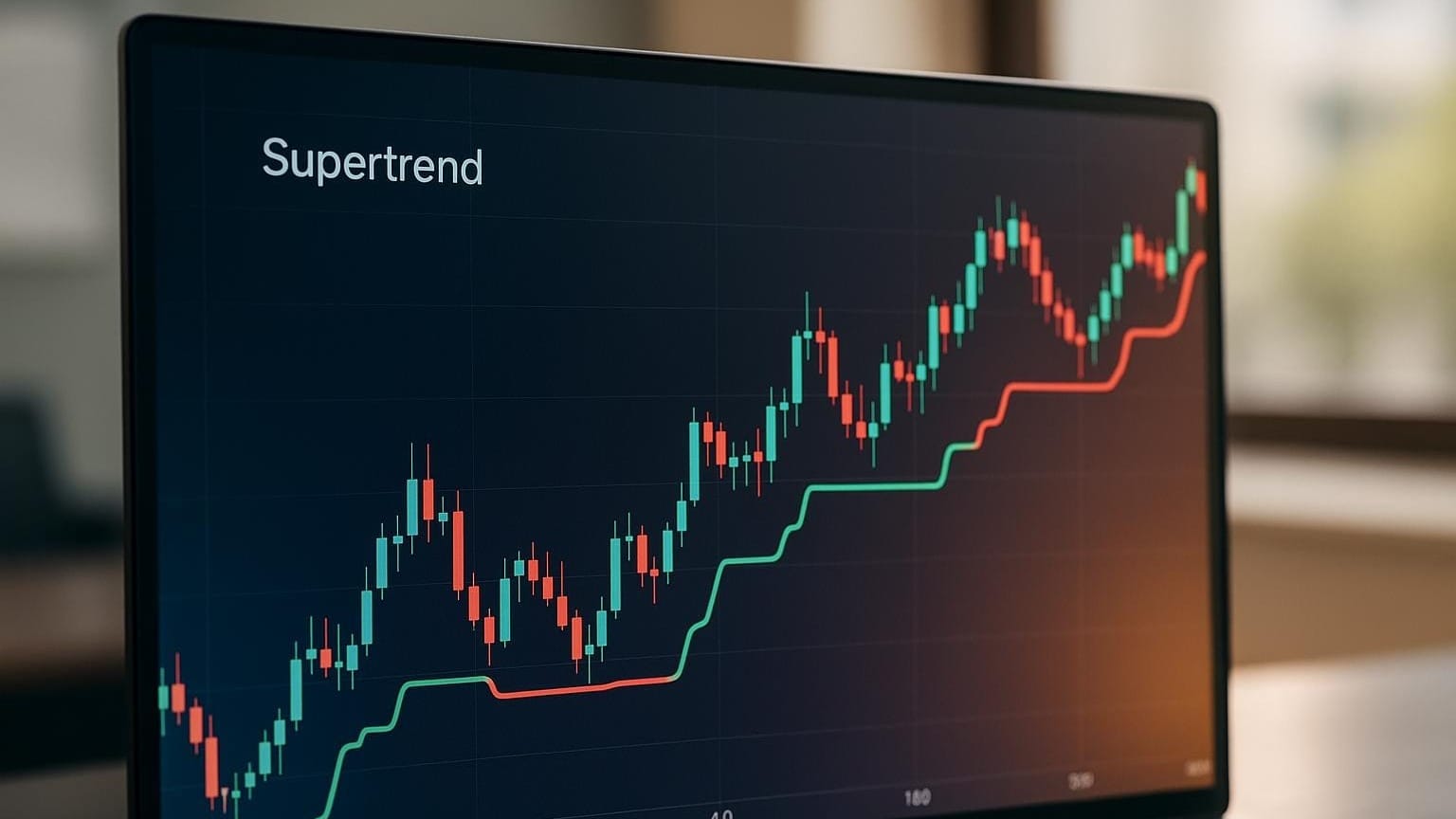Learn how a process-driven trading strategy can enhance discipline, reduce emotional decision-making, and lead to long-term success.
When traders prioritize profits over process, they often fall into emotional decision-making, poor risk management, and impulsive trades. This approach can lead to significant losses and inconsistent results. Instead, focusing on a process-driven strategy—centered on risk management, clear rules, and consistent execution—creates long-term success.
Key takeaways:
- Profit-chasing leads to emotional mistakes like overconfidence, FOMO, and holding losing trades too long.
- A process-driven mindset prioritizes discipline, minimizing losses and focusing on execution rather than outcomes.
- Successful trading involves preparation, risk management, and post-trade analysis, not just short-term gains.
Process Over Profit — A Video You Need to Hear
Why Process Beats Profit-Chasing for Trading Success
The most successful traders prioritize refining their process over chasing profits—a mindset supported by behavioral finance research and real-world examples.
Problems with Profit-Focused Trading
Focusing solely on profits often leads to psychological pitfalls, replacing rational analysis with emotional decision-making. Emotions like fear, greed, and hope can cloud judgment, resulting in impulsive actions. A striking example is Bitcoin's surge in 2021. Many inexperienced traders jumped in at record-high prices due to FOMO (fear of missing out). When the market corrected, they suffered substantial losses.
Dr. Brett Steenbarger, trading psychologist and author of The Psychology of Trading, explains this behavior:
"FOMO is fundamentally about social comparison. Traders see others making money and feel they're falling behind. This activates the same brain regions as physical pain, pushing people to make impulsive decisions just to relieve that discomfort."
Overconfidence and frustration can also lead to reckless trading. Paul Tudor Jones, a legendary hedge fund manager, underscores the importance of discipline:
"The most important rule in trading is to play great defense, not great offense. Overconfidence makes you forget this essential truth."
The 2021 meme stock frenzy serves as another cautionary tale. Many retail traders held their positions despite clear warning signs, ultimately facing significant losses when prices plummeted. Dr. Ari Kiev, a psychiatrist who worked with traders, offers a psychological perspective:
"Holding onto losing positions reflects a deeper psychological need to be right. Traders must learn to separate their self-worth from their trading results."
Profit-driven trading also fuels emotional decisions, often resulting in the classic mistake of buying high and selling low. Dr. Andrew Lo, Professor of Finance at MIT, explains:
"Financial panic is contagious. Our brains are wired to respond to perceived threats with fight-or-flight responses. In trading, this manifests as panic selling, which is almost always counterproductive."
By avoiding these emotional traps, traders can adopt a process-driven approach that fosters consistency and resilience.
How Process-Driven Trading Improves Results
A process-driven strategy shifts the focus from emotions to logic and analysis. This approach encourages traders to view wins and losses as neutral data points rather than personal achievements or failures. Emotional detachment allows traders to concentrate on executing their strategies correctly, without obsessing over profit margins. For a quick primer on risk management, see this evergreen reference.
As one trading principle wisely states:
"You can't control the market, but you can control your process."
This mindset helps traders remain calm during losing streaks, understanding that short-term setbacks don’t invalidate a sound strategy. By emphasizing discipline and consistency, a process-driven approach supports systematic market analysis, clear entry and exit rules, and effective risk management. With less pressure to chase profits, trading becomes a less stressful, more sustainable endeavor—leading to better decisions over time.
Research on Process-Oriented Trading Psychology
Behavioral finance research confirms that disciplined processes lead to better decision-making. Traders who maintain strong psychological control are less likely to make impulsive trades, reducing losses and sticking to their plans.
Additionally, studies show that mindfulness practices and stress-reduction techniques can improve focus and enhance decision-making for traders. For a neutral overview of mindfulness in decision-making, see this guide.
Core Elements of an Effective Trading Process

Creating a successful trading process hinges on three key components that work in harmony to promote consistency and discipline. These elements serve as the foundation of process-driven trading, ensuring your focus remains on execution rather than solely on profit outcomes.
Pre-Market Preparation and Trade Planning
Your trading day starts well before the markets open. A thorough pre-market review of news, global market activity, and technical charts is essential to stay competitive. See a concise primer on pre-market routines.
Begin by analyzing market news, economic data, and overnight developments. This helps you set clear, actionable trading objectives. Instead of vaguely aiming to "make money", define specific goals, like identifying high-probability breakout setups or setting a firm limit on risk exposure.
A well-structured trading plan is your roadmap. Outline your entry and exit criteria, risk management guidelines, and position sizing strategies. Write down your triggers for entering trades, stop-loss levels, and profit targets beforehand. This approach minimizes emotional decisions during volatile market conditions. Additionally, create a distraction-free workspace and stick to a structured schedule for analysis, execution, and review. Leveraging tools like trading platforms, real-time news feeds, and economic calendars can streamline your preparation, saving time and boosting consistency.
This level of preparation lays the groundwork for disciplined trade execution.
Trade Execution Rules and Risk Management
When the markets open, discipline is key. Stick to your predefined execution rules. Use technical indicators to guide your entry and exit points, and limit your risk to 1–2% per trade, ensuring total exposure doesn’t exceed 5% of your account. If you’re new to sizing, this overview on position sizing is helpful.
For instance, if you’re trading with a $50,000 account and adhere to a 2% risk rule, your maximum loss per trade would be $1,000.
Stop-loss orders are a crucial mechanism for limiting losses. For critical trades, consider using guaranteed stop-losses (where available), even if they come with added fees, to protect against slippage. Diversification is another risk management staple. By spreading exposure across sectors, sizes, and regions, you can offset losses in one area with potential gains in another; see the SEC’s investor bulletin on diversification.
Stay vigilant about economic and news events, as unexpected developments can disrupt even the most well-thought-out technical analysis. Additionally, validate your ideas with backtesting to evaluate risk-reward scenarios before going live. This helps refine your approach and builds confidence in your trading plan.
When these strategies are in place, the next step is to focus on improving through post-trade analysis.
Post-Trade Analysis for Improvement
The learning process truly begins once a trade is complete. Post-trade analysis involves reviewing market context, timing, and decision-making to identify areas for improvement.
Keep a daily trading journal to document key details like entry and exit times, chart setups, and your emotional state during the trade. Logging every trade—win or loss—helps you uncover performance patterns and highlights areas needing adjustment. Make this a daily habit to ensure consistency.
Monitor performance metrics such as win/loss ratios and drawdowns. Evaluating these metrics monthly can reveal trends that might not be apparent in daily fluctuations. Two definitions many traders track are profit factor and drawdown. Use insights from your analysis to refine your plan and reinforce a process-focused mindset.
Tools and Methods for Process-Based Trading
A disciplined trading process is the foundation of success, but the right tools can elevate decision-making and efficiency. With modern technology, traders can simplify analysis and gain real-time insights, making it easier to stick to a structured approach.
Trading Journals and Performance Tracking
A trading journal isn’t just a record—it’s a tool for growth. By logging your trades, you can uncover patterns, refine your strategies, and improve over time. It turns raw data into meaningful insights that guide better trading decisions.
"When it comes to trading, one habit consistently sets the smart traders apart from the rest: trade journaling."
What to Include in Your Journal
A detailed trading journal should cover these key areas:
- Trade Details: Record entry/exit prices, timestamps, position sizes, P/L, commissions, and duration.
- Market Context: Note price action patterns, volume, volatility, and relevant economic events.
- Emotions: Track your mindset before, during, and after each trade.
- Trade Categorization: Classify trades by strategy, asset class, conditions, duration, and risk level.
Key Metrics to Track
- Win Rate: % of profitable trades.
- Risk per Trade: Typically 1–2% of total capital.
- Profit Factor: Gross profit divided by gross loss.
| Metric | Description | Purpose |
|---|---|---|
| Win Rate | Percentage of profitable trades | Measures strategy effectiveness |
| Risk-Reward Ratio | Average profit vs. loss per trade | Validates position sizing |
| Max Drawdown | Largest peak-to-trough decline | Monitors risk management |
| Profit Factor | Gross profit divided by gross loss | Evaluates overall profitability |
Journal Formats
You can choose from digital apps for convenience, spreadsheets for customization, or paper journals for deeper reflection. Some traders use scoring systems to rate execution quality—grading entry timing, stop-loss placement, and adherence to plan. Regular reviews (weekly, biweekly, or monthly) help you stay aligned with goals and identify areas for improvement.
Checklists and Trade Entry Rules
Checklists are your safeguard against emotional decisions. By setting clear, objective criteria for every action, they ensure consistency—even in volatile markets.
Pre-Trade Checklists
A solid pre-trade checklist might include:
- Market analysis: Confirm trend direction and check economic events.
- Risk assessment: Calculate position size and verify risk rules.
- Setup validation: For breakouts, ensure volume is above average, the level is significant, and a stop-loss is in place.
Defining entry and exit rules
Replace vague guidelines with specific, measurable criteria. For example:
- Entry Rule: “Buy when price closes above the 20-period moving average, RSI > 50, and volume ≥ 25% above the 10-day average.”
- Exit Rule: Set profit targets using technical levels or risk-reward ratios, and define stop-losses with clear percentages or indicators.
Document these rules and consult them before every trade.
Risk Management
Your checklist should also include risk protocols. Ensure:
- Position sizes align with the 1–2% rule.
- Total portfolio exposure stays within limits.
- Margin is sufficient for adverse moves.
LuxAlgo Tools for Process Optimization
LuxAlgo provides trading tools on TradingView designed to turn manual processes into automated, data-driven workflows. These solutions integrate with your trading routine, providing real-time insights and systematic signals to support disciplined decision-making.
Price Action Concepts (PAC) Toolkit
The PAC Toolkit automates pattern detection and identifies volumetric order blocks, saving time on manual analysis. It highlights key support/resistance, trend changes, and order flow to ensure consistent pattern recognition across markets.
Signals & Overlays (S&O) Toolkit
This Toolkit provides real-time algorithmic signals and visual overlays for quick identification. It’s customizable to match your trading style and offers immediate context for market conditions, enabling faster, more informed decisions.
The Oscillator Matrix combines multiple oscillator readings into a single view, simplifying trend analysis. It detects divergences and tracks money flow, offering insights into potential trend exhaustion and early reversals.
| Toolkit | Key Features | How It Saves Time |
|---|---|---|
| Price Action Concepts | Auto-pattern detection, volumetric blocks | Reduces manual analysis workload |
| Signals & Overlays | Real-time signals, visual overlays | Speeds up signal identification |
| Oscillator Matrix | Divergence detection, money-flow insights | Provides rapid trend analysis |
LuxAlgo’s AI Backtesting Assistant—documentation—lets you test strategies across timeframes and assets. It delivers detailed performance metrics (win rate, drawdown, profit factor) to help refine strategies before risking real capital. This web platform helps ensure your decisions are grounded in historical evidence, not guesswork. Explore feature highlights for backtesting on LuxAlgo.
Plans: Free — $0 (lifetime access; Library and more); Premium — $39.99/month (advanced signals, alerts, oscillator tools on TradingView); Ultimate — $59.99/month (includes AI Backtesting). See pricing.
Managing Emotions Through Process-Based Trading
Emotions like fear, greed, and anxiety can wreak havoc on even the most well-thought-out trading strategies. They cloud judgment and lead to impulsive decisions that often ignore risk. A structured process keeps emotions in check, helps you stay disciplined, and provides a mental edge when markets become chaotic. This approach protects capital and builds confidence in your decision-making.
How Process Reduces Trading Stress
Takes the Guesswork Out of Decisions
When you follow a predefined trading plan with clear entry and exit rules, you eliminate the need to make decisions on the fly. This reduces mental strain and gives a sense of control even when markets are unpredictable.
Shifts Focus to Execution, Not Outcomes
A process-driven approach changes how you evaluate success. Instead of obsessing over profits or losses, you focus on how well you stuck to the plan. Rather than asking, "Did I make money?" ask, "Did I follow my process?" This mindset fosters consistency over time.
Practical Methods for Emotional Control
Stick to Strict Risk Rules — Setting firm risk limits reduces fear and helps you make clearer decisions.
| Emotional Trigger | Impact on Trading | How to Manage It |
|---|---|---|
| Fear | Hesitating or missing trades | Use pre-planned entries |
| Greed | Taking oversized positions | Enforce position-sizing rules |
| Anger | Revenge trading | Take mandatory breaks |
| Anxiety | Exiting too early | Follow systematic exits |
Incorporate Mindfulness — Pair your trading plan with mindfulness techniques to better handle volatility. Brief breathing exercises before sessions and strategic breaks help maintain balance.
Track Your Emotions in a Journal — Note how you feel before, during, and after trades to uncover triggers that lead to poor decisions.
Set Limits for Losses and Gains — Establish daily and weekly boundaries for both losses and profits. If you hit your loss limit, step away for the day; profit targets can also prevent overtrading.
Don’t Hesitate to Seek Support — Mentorship and professional guidance provide perspective and coping strategies that improve performance and well-being.
Conclusion: Building Long-Term Success Through Process
The key difference between traders who achieve long-term success and those who fall short lies in a simple but powerful shift: prioritizing process over chasing profits. When you move away from the hunt for quick gains and focus on disciplined systems, outcomes naturally improve—delivering more consistent decisions, better emotional control, and steady progress over time.
Top-performing traders build routines that support consistent results: thorough pre-market preparation, clear execution guidelines, and detailed post-trade analysis. A documented trading plan paired with strict risk rules reduces stress and strengthens discipline.
A solid trading process should revolve around three pillars: systematic preparation, disciplined execution with clear entries/exits, and honest post-trade analysis. To help traders embrace this structured approach, LuxAlgo provides PAC, S&O, and the AI Backtesting Assistant—resources that offer data-driven insights to refine your strategy. The Ultimate plan ($59.99/month) includes advanced backtesting capabilities so you can validate methods before risking capital. You can also explore the Library of free indicators with a free account.
FAQs
How can I shift my focus from profits to building a process-driven trading strategy?
Emphasize discipline and routine rather than short-term gains. Develop a trading plan that specifies entries/exits, risk rules, and decision steps. Tools like AI Backtesting and Library indicators can help you test and systematize ideas before going live.
What are the most common emotional challenges in trading, and how can focusing on the process help overcome them?
Common hurdles include fear, greed, overconfidence, and reaction to volatility. Process-driven habits (journaling, checklists, position-sizing rules) minimize emotional interference and promote logical decision-making.
How do tools like trading journals and checklists improve trading performance?
Journals and checklists create structure and accountability. They reveal recurring patterns, strengthen adherence to your plan, and reduce impulsive choices—key ingredients for consistent outcomes.
References
LuxAlgo Resources
- LuxAlgo — Official Site
- AI Backtesting Assistant
- AI Backtesting Assistant — Docs (Introduction)
- Backtesting — Features Overview
- LuxAlgo Library
- Pattern Detector — Library
- Breakout Detector (Previous/MTF High-Low Levels) — Library
- Price Action Concepts (PAC) — Docs
- Signals & Overlays (S&O) — Docs
- Oscillator Matrix (OSC) — Docs
- PAC Backtester — Exits (Docs)
- AI Backtesting — Fetching Strategies (Docs)
- Stress Testing for Trading Strategies — LuxAlgo Blog
- LuxAlgo — Pricing
- LuxAlgo — Features
External Resources
- Bitcoin — Wikipedia
- Massachusetts Institute of Technology (MIT)
- Risk Management — Investopedia
- Pre-Market Routine — Investopedia
- Position Sizing — Investopedia
- Stop-Loss Order — Investopedia
- Diversification — U.S. SEC Investor.gov
- Profit Factor — Investopedia
- Drawdown — Investopedia
- Mindfulness — Investopedia








